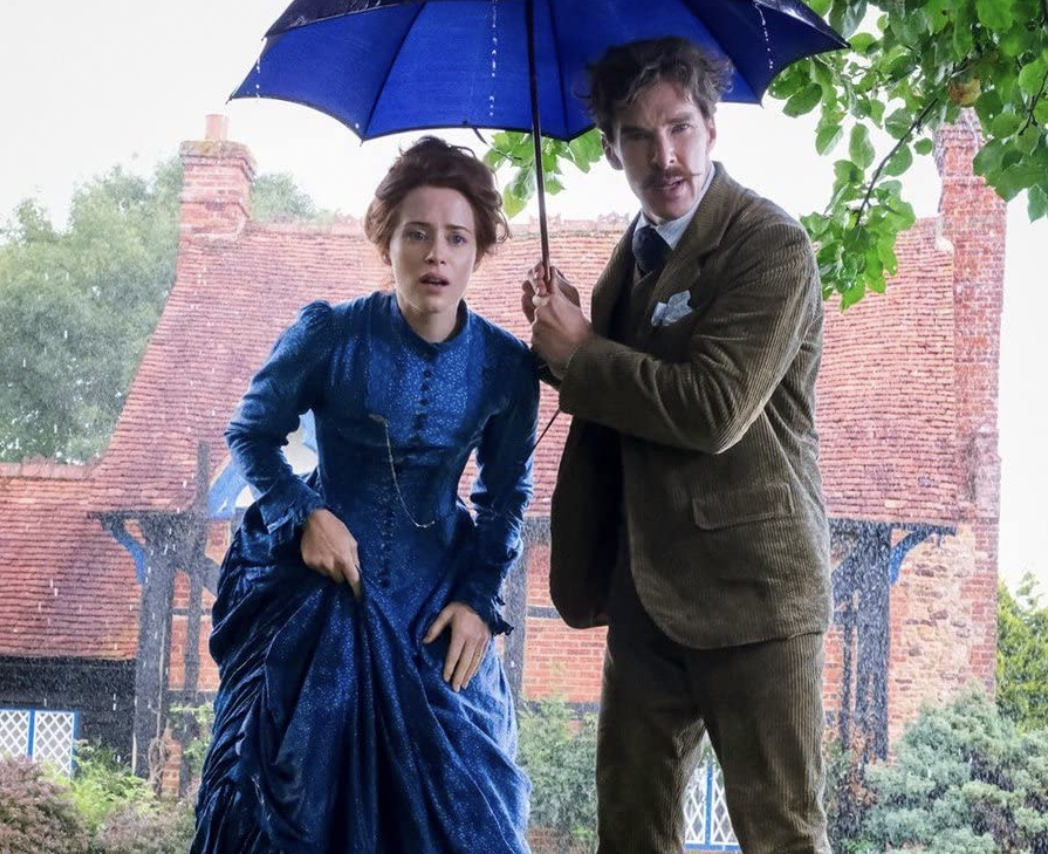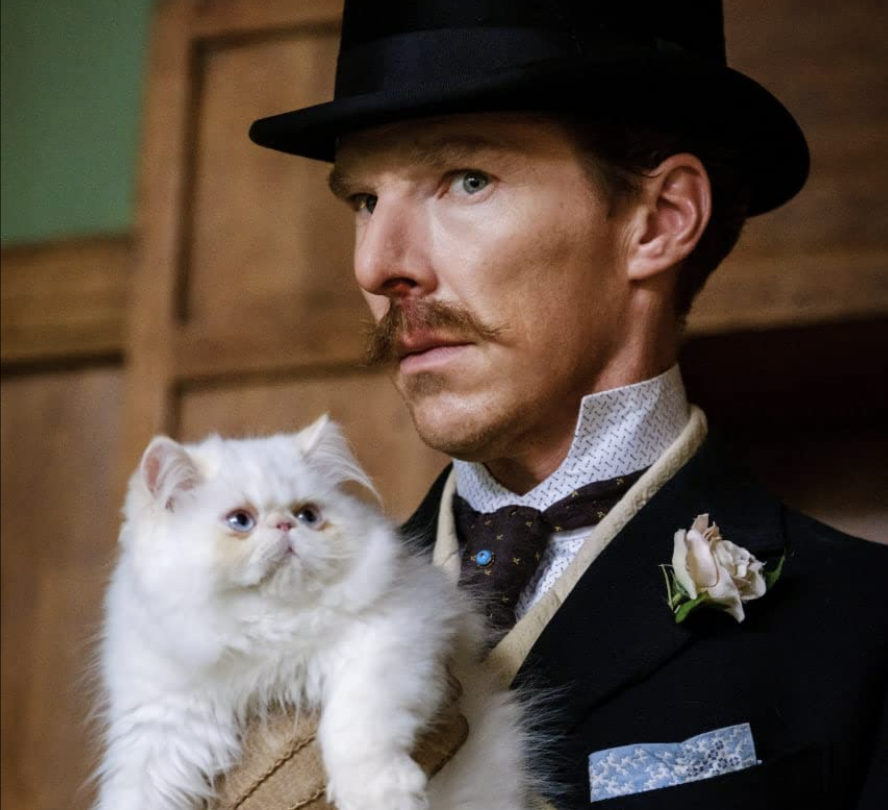By Amelia Jacob, First Year, English Literature
I want to preface this review with one confession: I don’t like cats. Never have, never will. I find their eyes creepy, their spraying disgusting and their arrogance irritating.
I suspected this was going to be an issue when I discovered that Will Sharpe’s newest cinematic offering was a biopic of Louis Wain, a Victorian artist specialising in – you guessed it – cat paintings. Not just any cat paintings either, but obsessive, detailed, anthropomorphised cat paintings that tread the fine line between eccentric and ridiculous.

It is clear why Sharpe is drawn to this subject matter. The Electrical Life of Louis Wain follows the titular artist (Benedict Cumberbatch) over the years, spanning his young adult-hood as an illustrator and aspiring inventor attempting to support his large family, up to his final years as a reclusive patient in a psychiatric hospital. His tentative and ill-fated romance with Claire Foy’s Emily, the older governess of his young sisters, sets in motion a series of events which will cement his status as a creative visionary, but also results in the fracturing of his relationships, and eventually his sanity.
Sharpe’s work has always been concerned with the intersection of creativity and mental illness, and this film is no different. Both painfully anxious and highly talented, Wain lacks any sort of business acumen that could help his financial situation. Extended nightmare sequences of shipwrecks and drowning repeat against a booming score, interwoven with the account of his gradual descent into poverty. It is torturous to watch, particularly because it seems so avoidable.

The fundamental flaw of The Electrical Life of Louis Wain is that once these events start happening, their catastrophic consequences multiply, growing larger and larger, until not even the mawkish message of the film – ‘The electricity is love!’ – can outweigh their depressing weight on the narrative.
Despite this, The Electrical Life of Louis Wain is undeniably beautiful. It finds itself at its best in the dreamy, pastel-washed depiction of new love at the beginning of the film, and in the quiet, understated humour of the interactions of the Wain family. Often particular shots will pause and swirl delicately, the lines of the character’s figures bleeding into each other like an oil painting.

The dynamic between Foy and Cumberbatch too is both subtle and sweet. Both actors are doing what they do best: Claire Foy plays the Queen if she were a Victorian governess, and Benedict Cumberbatch plays Sherlock if he could draw. Their reliably good performances aren’t so impressive, but are still enjoyable to watch.
Truthfully, I expected to fall in love with The Electrical Life of Louis Wain the way I fell in love with Will Sharpe’s other works. It hasn’t earned the same space in my heart as Flowers (2016-18), and I still don’t like cats, but I can appreciate them a little more after watching this film.
Featured Image: IMDB
Did you find Louis Wain as electric as his art?








